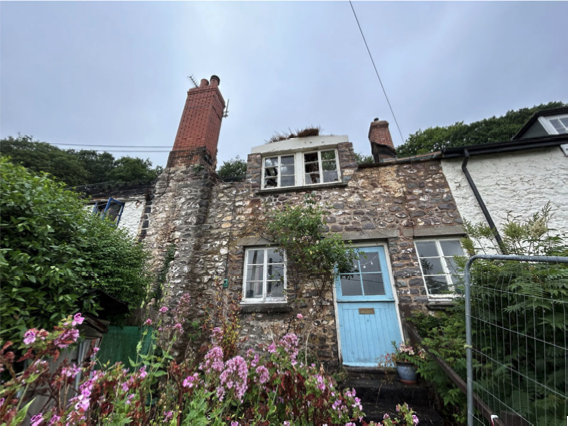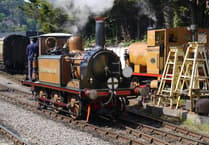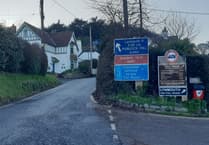TWO thatched West Somerset cottages destroyed by fire last year are to be rebuilt with roofs instead made with natural slate.
The two-bedroom properties in a terrace of six in Lane Head, Porlock Weir, caught alight last May, resulting in 26 fire crews attending from across Somerset and Devon.
Investigators said the cause was a chimney fire in one of the properties which spread to the thatch.

+ 3
(View All)
Plans have been submitted to rebuild two fire-destroyed thatched cottages in Porlock Weir.
The two homes were left uninhabitable after the blaze, which took more than 24 hours to put out, and three others in the row were also damaged.
Now, the Porlock Manor Estate has submitted rebuilding plans to Exmoor National Park Authority.
Planning agent Adam Williams, of Savills, said: “Through a combination of the fire and the attempts to put out the fire, much of both the properties were lost.
“Currently, the properties are only survived by their external walls and separating party wall.
“The structures have been stripped of all internal finishes and structures, with exception to the staircases and first floor structure retained in order to offer structural bracing until the reinstatement works commence.”
Mr Williams said the homes would look largely the same as before, except the roofing thatch would be replaced with grey natural slate to match neighbouring properties.
Slate was being used to reduce the fire risk to other properties in the terrace of houses, the two nearest having had their thatch replaced some years ago.
Mr Williams said: “The internal appearance will largely replicate that of the properties in their previous form, retaining the aesthetics and layout of a traditional rural cottage.
“Following the strip out of the property, it has been found that much of the internal timber structure has been damaged/decayed as a result of the fire and the volume of water used to save the structure.
“Exposed timber beams will be reinstated where currently visible at ground floor level.”
Mr Williams said planning permission was also being sought for a temporary contractor’s compound in a nearby field used for horse grazing because there was not enough room on the road for builder’s vehicles to park.




Comments
This article has no comments yet. Be the first to leave a comment.